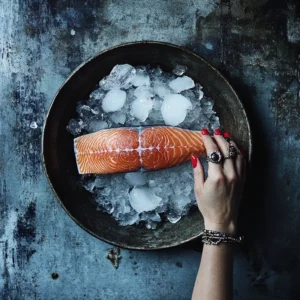Hot Smoking vs. Cold Smoking Salmon: What’s the Difference?
Smoking salmon is a time-honored technique that enhances its flavor, texture, and shelf life. Whether you’re a seafood enthusiast or a curious home cook, you’ve likely encountered two main methods: hot smoking and cold smoking. While both approaches use smoke to infuse the fish with rich, savory notes, they differ significantly in process, temperature, texture, and end result. Let’s break it down so you can decide which method suits your taste—or your next culinary adventure.
Hot Smoking: The Cooked Classic
Hot smoking is the more common of the two techniques, especially for those who enjoy a flaky, fully cooked piece of salmon. This method involves smoking the fish at higher temperatures, typically between 120°F and 180°F (49°C to 82°C), though some setups creep closer to 200°F (93°C). The heat cooks the salmon while the smoke imparts its signature flavor.
- Process: The salmon is usually cured first with a mix of salt, sugar, and sometimes spices to draw out moisture and season the flesh. It’s then placed in a smoker where wood chips (like alder, hickory, or applewood) smolder and release aromatic smoke. The combination of heat and smoke cooks the fish through in a few hours—typically 2 to 6, depending on size and thickness.
- Texture: Hot-smoked salmon is firm, flaky, and moist, resembling a piece of grilled or baked fish. It’s ready to eat straight from the smoker—no additional cooking required.
- Flavor: Expect a bold, smoky taste that complements the salmon’s natural richness. The curing and cooking concentrate the flavors, giving it a hearty, satisfying bite.
- Uses: Hot-smoked salmon shines in dishes like salads, pastas, or as a standalone protein. It’s perfect for flaking over a creamy chowder or pairing with roasted veggies.
Cold Smoking: The Delicate Art
Cold smoking, on the other hand, is a slower, more nuanced process that keeps the salmon raw while infusing it with smoke. The temperature stays low—usually between 68°F and 86°F (20°C to 30°C)—ensuring the fish doesn’t cook. This method requires more precision and time, often taking 12 to 24 hours or even longer.
- Process: Like hot smoking, cold smoking starts with a cure to preserve the fish and enhance its flavor. After curing, the salmon is air-dried to form a tacky surface (called a pellicle), which helps the smoke adhere. It’s then smoked in a controlled, cool environment where the smoke circulates without raising the internal temperature of the fish.
- Texture: Cold-smoked salmon remains silky, tender, and almost buttery, with a translucent appearance. It’s not cooked, so it retains a sushi-like quality—perfect for slicing thin.
- Flavor: The smoke flavor is subtler and more refined compared to hot smoking, letting the salmon’s natural taste shine through. It’s less intense but deeply complex, often with a slight salty edge from the cure.
- Uses: Think lox on a bagel with cream cheese, elegant appetizers, or delicate canapés. Cold-smoked salmon is a star in raw preparations where its velvety texture can take center stage.
Key Differences at a Glance
- Temperature: Hot smoking cooks the salmon (120°F–180°F), while cold smoking keeps it raw (68°F–86°F).
- Texture: Hot-smoked is flaky and firm; cold-smoked is smooth and silky.
- Time: Hot smoking takes hours; cold smoking can take a day or more.
- Preparation: Hot-smoked salmon is ready to eat as a meal; cold-smoked often plays a supporting role in dishes.
- Equipment: Hot smoking can be done in basic smokers or even a grill, while cold smoking often requires specialized gear to keep temperatures low.
Which Should You Choose?
It depends on what you’re craving. If you want a robust, meal-ready salmon with a pronounced smoky kick, hot smoking is your go-to. It’s also more forgiving for beginners since the higher heat reduces the risk of bacterial growth. Cold smoking, though, is ideal for those who love the luxurious texture of raw salmon and don’t mind investing extra time for a delicate, gourmet result. (Note: Cold smoking requires strict attention to food safety—keep that fish properly cured and refrigerated!)
Final Thoughts
Both hot smoking and cold smoking transform salmon into something extraordinary, each in its own way. Hot smoking delivers a hearty, cooked dish that’s versatile and approachable, while cold smoking offers a sophisticated, melt-in-your-mouth experience. Why not try both? Experiment with a small batch, tweak your cure, and play with wood types—because when it comes to smoked salmon, the journey is as delicious as the destination.

